Former Yamajo Miyasaka Silk Mill
I came to see one of the buildings included in Okaya City’s Heritage of Industrial Modernization.
The former Yamajo Miyasaka Silk Mill, established in 1874, was one of the medium-sized factories that supported Okaya’s silk industry from its heyday in the Taisho and Showa periods to the postwar reconstruction period.
It is no longer in operation. Many of the buildings such as offices and factories remain, but some buildings are in danger of collapsing.
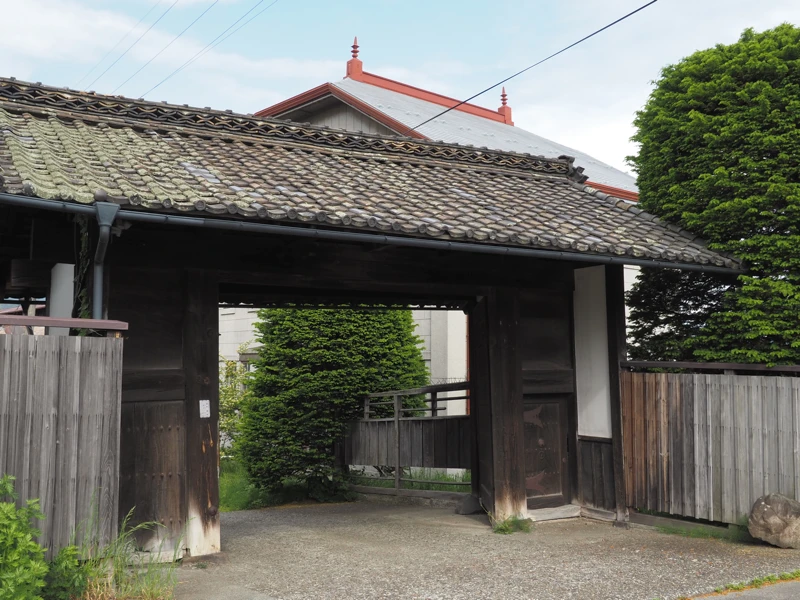
Enter through the main gate on the west side.
Beyond the gate is the office, which was built in 1927.
This building is the office.
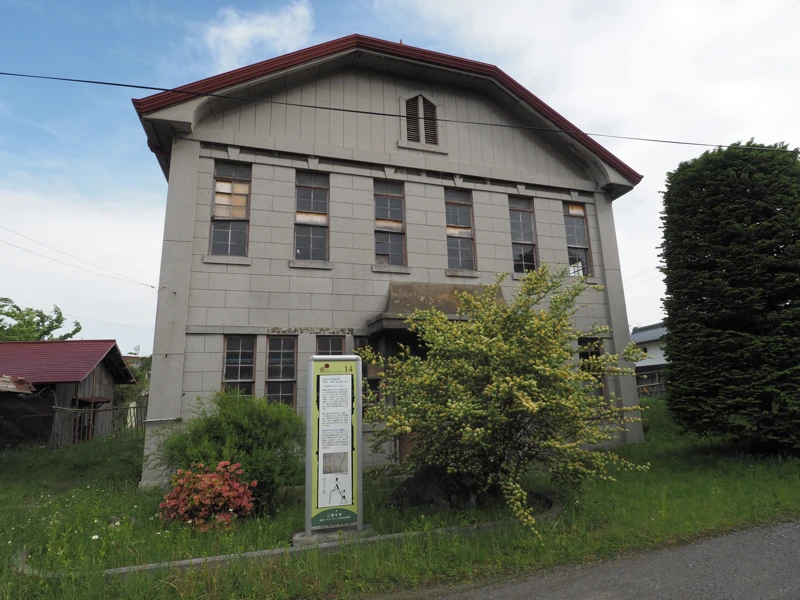
Some of the glass has been broken and veneer has been lined up.
There is an explanation in front of the building, but it does not say how long it was in operation.
The official website of Okaya City said that only the exterior of the building was open to visitors, so I came to the site, but it was not an atmosphere in which I could freely walk around the premises.
The building on the east side of the office was distorted and looked as if it was close to collapse.
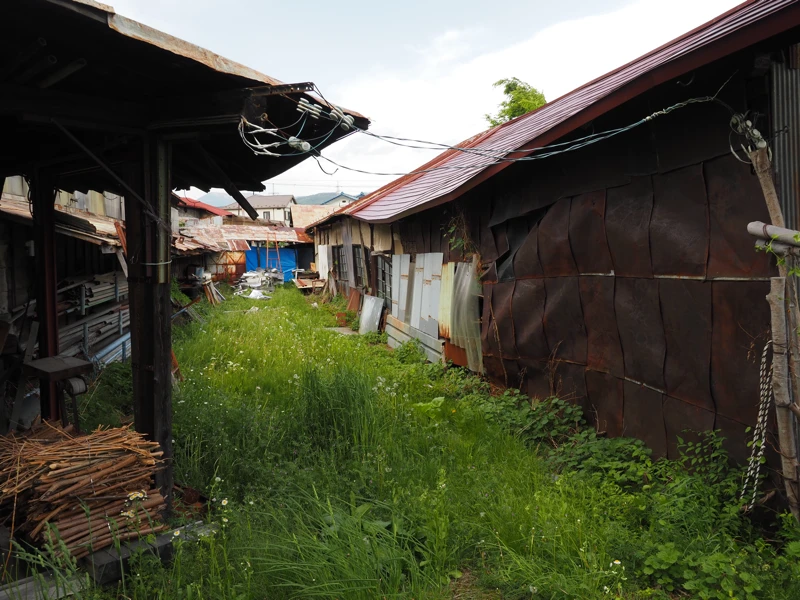
This is the residence, which was built between 1893 and 1994.
After seeing the view above, I was a bit nervous and did not get close to the building.
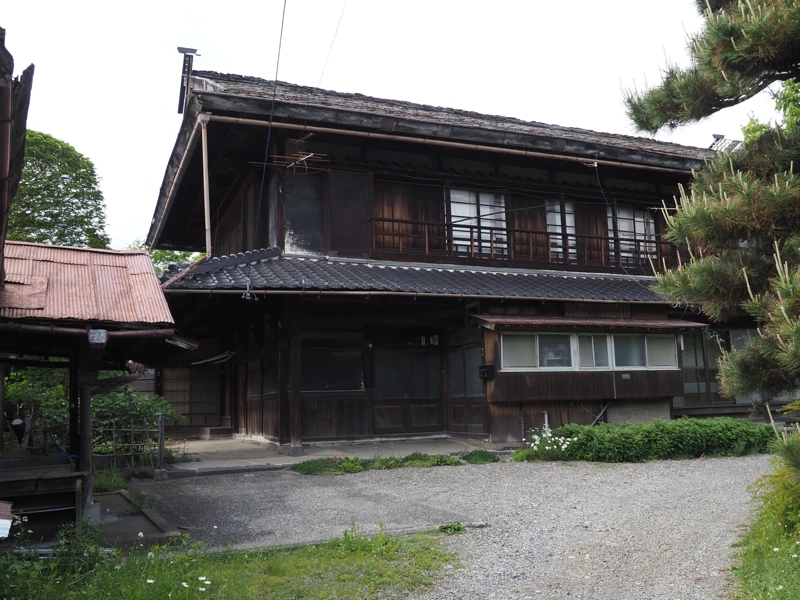
I chose two aerial photos that were as clear as possible.
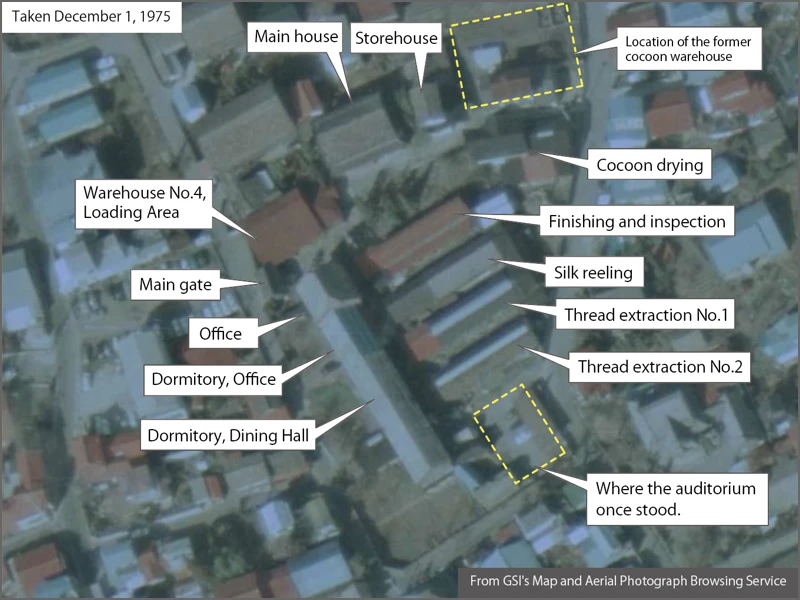
The first photo was taken in 1975, but the cocoon warehouse is missing. There used to be cocoon warehouses in the area circled by the dotted line in the upper right corner of the photo, as well as on the west side of the office, but it seems to have been dismantled already.
Therefore, it is likely that they were no longer in operation at this point.
There used to be an auditorium on the south side of the site, but this also seems to have been demolished, although I do not know when.
The names of the buildings in the photo were written based on the description of the watercolor painting (bird’s eye view) of the former Yamajo Miyasaka Silk Mill donated to the Okaya Silk Museum in 2024.
The painter donated an enlarged reproduction of the original painting, which depicts the factory as it appeared in 1938.
Since the name of the building is as of 1938, I guess some of the names have been changed since then.
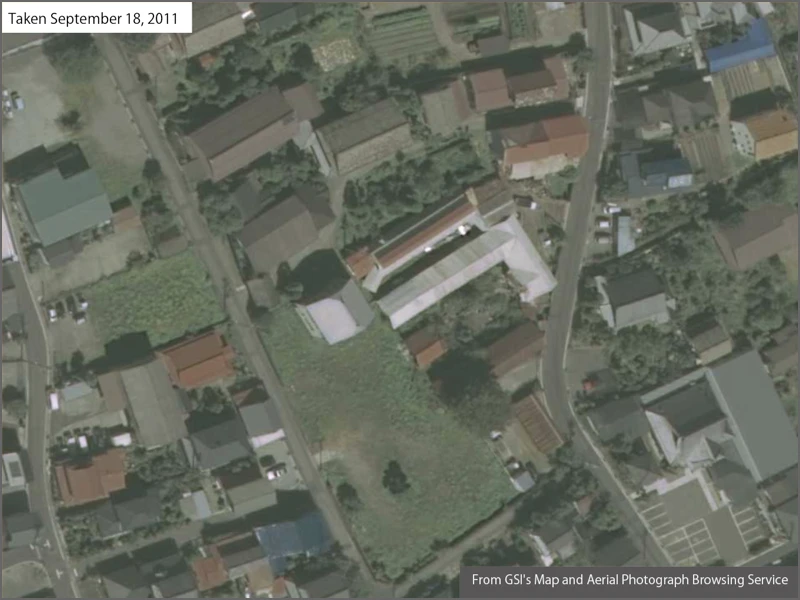
The second photo, from 2011, shows the building in much the same condition as it is today.
The dormitory has been removed, but the thread extraction No.1 appears to have collapsed.
Opposite the office is this loading area. This must have been where they loaded and unloaded cargo.
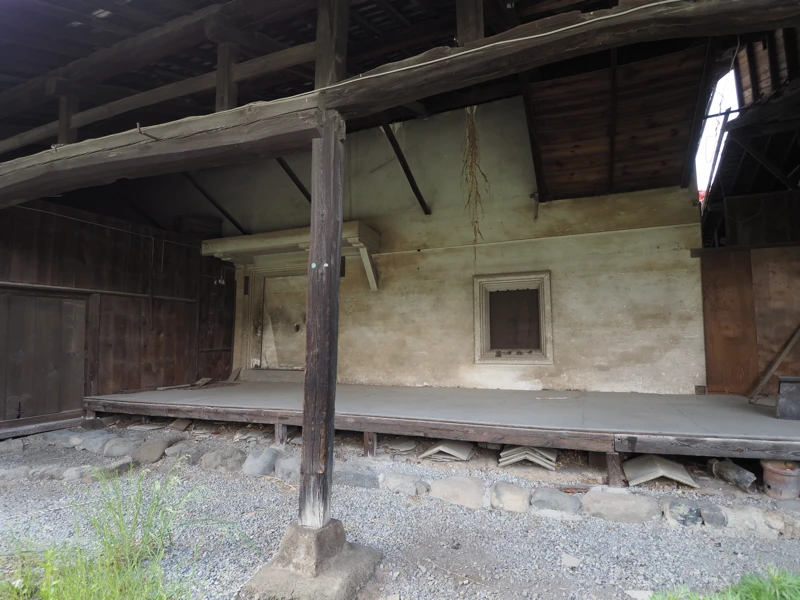
The south side of the office is a vacant lot, but I didn’t feel like walking around, so I went out to the road to take some pictures. The old factory building can be seen from here. It seems that the thread extraction No.1was appears to have collapsed. It is already covered by trees.
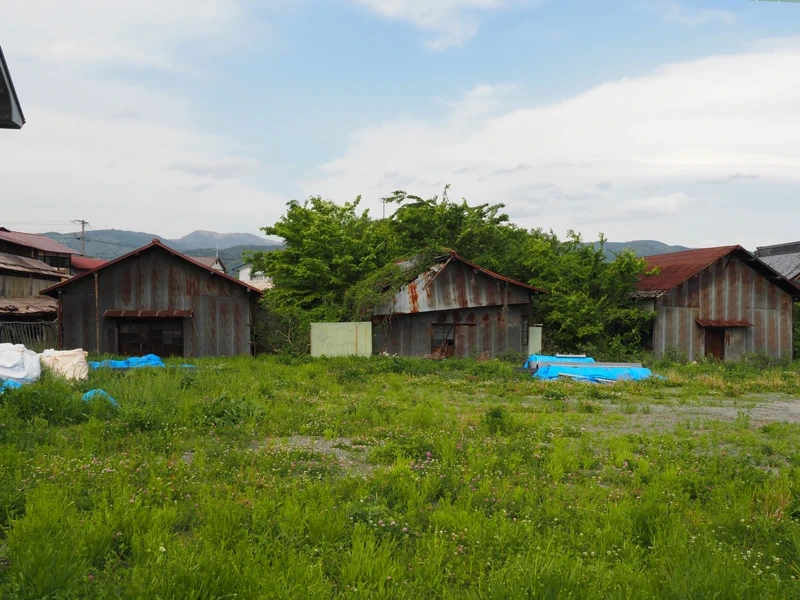
I wonder who owns the land and the building now.
It is fine to name it as a modern industrial heritage, but I think the factory will have to be demolished sooner or later if things continue as they are.
* I added the following article later.
[Related article]
"Former Yamajo Miyasaka Silk Mill (2)“ (2025-11-04)

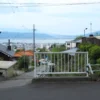
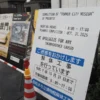
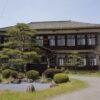
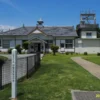
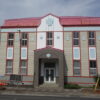

Discussion
New Comments
No comments yet. Be the first one!